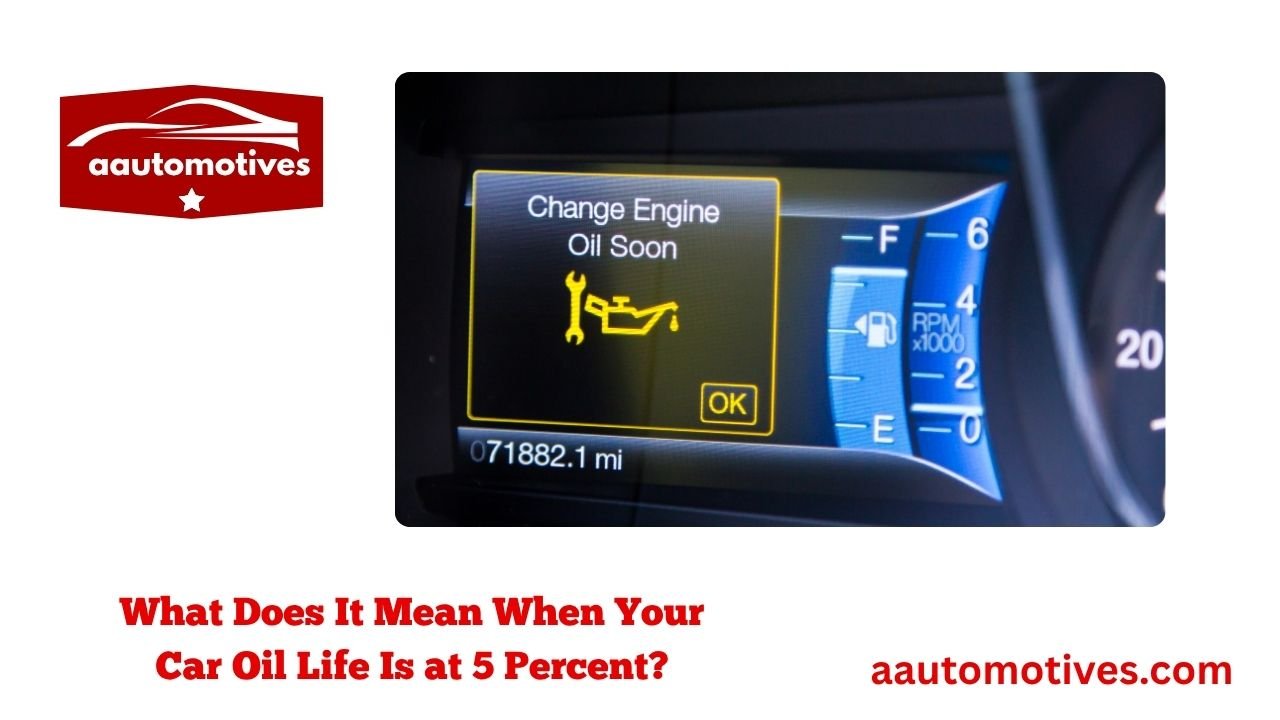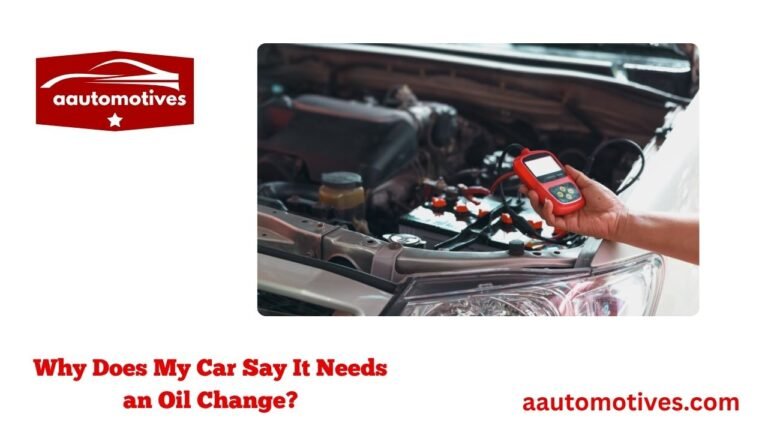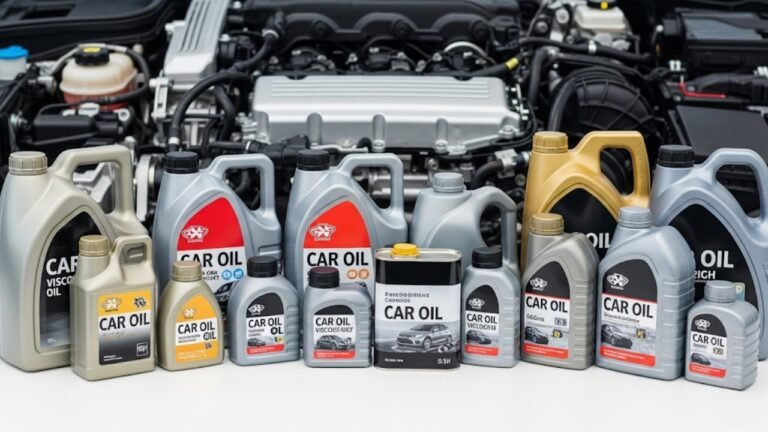What Does It Mean When Your Car Oil Life Is at 5 Percent?

We’ve all been there. You’re cruising down the road, your favorite song on the radio, and suddenly—bing!—your dashboard lights up with a message: “Oil Life 5%.” It’s one of those alerts that doesn’t scream “pull over now,” but it still makes you pause. What does it really mean? Is your engine about to explode? Should you panic? Or is this just a soft nudge from your car to show a little love?
The car oil life 5 percent alert is one of those silent, steady reminders that your car has a voice—it’s telling you it’s almost time for an oil change. In this detailed and friendly guide, we’re diving deep into what that message means, how to respond, and what happens if you ignore it. This article is written just like how a friend would explain it to you—with genuine care, a bit of lived experience, and enough facts to keep your car happy.
Let’s roll.
What Is Oil Life and Why Should You Care?

When your car says “oil life 5 percent,” it means your engine oil is still doing its job—but it’s nearing the end of its effective life. Think of it like your phone battery hitting 5%. It’s not dead yet, but you’re on borrowed time.
Here’s why this number matters:
Old or dirty oil doesn’t lubricate well.
Your engine parts wear out faster.
Poor oil can cause overheating or damage.
Fuel efficiency drops.
Ignoring it could cost you big on repairs.
So when that car oil life 5 percent alert comes on, think of it as your car whispering, “Hey buddy, let’s not push our luck.”
How Is Oil Life Calculated in Modern Cars?
Modern cars are smarter than ever. Many of them come with an Oil Life Monitoring System (OLMS). This system uses sensors and algorithms to track not just mileage but driving habits, temperatures, and engine load.
Here’s a simple breakdown of what the system considers:
| Factor Tracked | Impact on Oil Life Calculation |
|---|---|
| Driving Habits | Aggressive driving burns oil faster. |
| Short Trips | Oil doesn’t get hot enough to evaporate water. |
| Idle Time | Causes oil to degrade without moving the car. |
| Engine Load | Heavy towing or uphill driving wears oil more. |
| External Temperature | Cold or hot weather stresses engine oil. |
So, two cars with the same mileage might show totally different car oil life 5 percent alerts depending on how they’re driven.
This system gives a more accurate picture than just using your odometer. It’s like going to a doctor who looks at lifestyle, not just age.
What Happens When You Reach 5% Oil Life?
Let’s get real—5% oil life doesn’t mean the oil is empty. Your engine still has oil in it, and it’s still doing its job. But here’s the thing: the quality and effectiveness of that oil are fading fast.
Here’s what’s happening inside your engine at 5% oil life:
The oil has picked up metal shavings, dirt, moisture, and carbon.
It’s losing its viscosity (ability to flow and coat parts well).
Its detergent and anti-wear properties are nearly depleted.
Heat isn’t being dispersed as efficiently.
Internal engine friction increases.
If you continue to drive on old oil, it’s like running a marathon in worn-out sneakers. You can keep going, but you’re asking for trouble.
Your car is giving you one last heads-up. Don’t ignore it.
Can You Still Drive with 5% Oil Life?
Yes, you can drive with 5% oil life, but don’t delay the oil change much longer. Think of it as your car giving you a gentle deadline.
Here’s how long you can usually go:
If you’re doing normal driving (no towing, no racing), you might get 100–300 miles.
If you’re in harsh conditions (extreme heat, traffic jams), play it safe—get the oil changed within 50–100 miles.
Don’t take long road trips or high-speed drives until you’ve refreshed your oil.
A lot of people ask, “Is it okay to wait until 0%?” Technically, maybe. But practically, it’s risky. Your engine is like the heart of your car. Don’t clog its arteries.
What Kind of Oil Should You Use When You Change It?
So the dashboard says car oil life 5 percent, and you’re headed to the shop or popping the hood yourself. But now comes the big question: what oil should you use?
There are three main types:
Conventional Oil: Cheapest, but wears out faster.
Synthetic Blend: A good middle ground. Better performance, still affordable.
Full Synthetic: Best for longevity and extreme conditions.
Here’s a quick table for guidance:
| Oil Type | Best For | Change Interval |
|---|---|---|
| Conventional | Older engines, light driving | 3,000 – 5,000 miles |
| Synthetic Blend | Moderate drivers, mixed conditions | 5,000 – 7,500 miles |
| Full Synthetic | Newer engines, performance, cold/hot climates | 7,500 – 10,000 miles |
Tip: Always check your owner’s manual. Use the viscosity grade (like 5W-30) that the manufacturer recommends.
Also, if you’ve waited until car oil life 5 percent, consider using a high-mileage oil if your vehicle is older or has over 75,000 miles on it.
Personal Experience: The Time I Ignored 5% Oil Life
Let me share a quick story. A couple of years ago, I was juggling work, life, and a lot of weekend road trips. My car gave me that quiet “oil life 5%” message. I shrugged it off.
I kept driving.
It hit 0%. Still ignored it.
By the time I got the oil changed, it was nearly 700 miles overdue. Guess what happened?
My engine started sounding rougher.
I lost some MPG.
And at my next service, I was told my oil filter was clogged and my oil was almost sludge.
It cost me over $300 in extra labor and diagnostics. Lesson learned: don’t treat car oil life 5 percent like a suggestion. It’s more like a friendly but firm warning from your car.
Why Regular Oil Changes Are a Big Deal
Changing your oil is like drinking water—it’s basic, but essential. Here’s what fresh oil does:
Lubricates moving parts.
Cleans engine components.
Prevents overheating.
Improves fuel efficiency.
Extends engine life.
When you ignore that car oil life 5 percent signal, all of these benefits slowly vanish.
Your car engine is made up of metal rubbing against metal. Without clean oil, friction builds. Heat increases. Eventually, parts warp or break. And you’re stuck with a massive repair bill.
Even if your car seems to be running fine, the damage is invisible—until it’s not.
The Emotional Side: Trusting Your Car Like a Friend
It might sound silly, but I think of my car like a loyal companion. It gets me to work, takes me on adventures, and keeps me safe during storms. When it flashes a message like “car oil life 5 percent,” it’s not just a machine beeping. It’s a friend saying, “Take care of me, and I’ll take care of you.”
That connection matters. Especially if you’ve had your car for years. Small things like changing the oil on time, listening for weird noises, or checking tire pressure—it all adds up to respect.
Treat your car like a friend. It will repay you in reliability.
Signs It’s Time to Change Your Oil Even Before the 5% Warning
Sometimes, your car will show signs that it needs an oil change before the dashboard warning ever pops up. Relying only on the oil life monitor might not be enough, especially if your car is older or doesn’t have advanced sensors.
Here are a few signs to watch out for:
Engine noise and knocking: If your engine sounds louder than usual, your oil may not be lubricating well.
Exhaust smoke: Thick or dark smoke from your tailpipe can signal old, dirty oil.
Burnt oil smell: If you smell something burning inside or around your car, it could be overheated oil.
Oil texture and color: Fresh oil is amber and smooth. If it looks black and gritty on the dipstick, it’s overdue.
Decreased fuel economy: Engine efficiency drops as old oil struggles to reduce friction.
These early signs often show up before that car oil life 5 percent message. Pay attention, and you’ll avoid engine stress and expensive repairs.
What Happens If You Ignore the 5% Oil Life Warning?
You might be tempted to ignore that 5% oil life alert—maybe you’re too busy, or payday is still a week away. But here’s the truth: delaying that oil change can set off a domino effect of problems.
Let’s break it down:
Oil Degradation: The oil thickens and becomes less effective.
Contaminant Buildup: Dirt, metal shavings, and combustion byproducts start to gum up your engine.
Increased Friction: Without clean oil, moving parts grind together, causing wear.
Overheating: Oil can’t cool parts properly, leading to engine overheating.
Sludge Formation: Over time, oil turns into sludge, clogging passages and harming the oil pump.
If you let it go long enough, the engine could seize—and that’s a four-digit repair bill or a new engine altogether.
Don’t let a simple oil change turn into a major expense. When your dashboard shows car oil life 5 percent, take it seriously. Your car is doing its part. Now it’s your turn.
DIY Oil Change vs. Mechanic: Which Is Better?
When you get that oil life 5% alert, you have a choice. Should you handle it yourself or go to a mechanic?
Let’s compare:
DIY Oil Change
Pros:
Saves money (usually $20–$40).
Teaches you about your car.
You control the oil and filter brand.
Cons:
Takes time and tools.
Messy if done wrong.
You must dispose of oil properly.
Mechanic or Oil Shop
Pros:
Fast and clean.
They inspect other parts (brakes, tires, filters).
Warranties and service records.
Cons:
Costs more (typically $50–$120).
Upselling risks (they may push extra services).
In short, if you enjoy DIY and have the time, go for it. But if you’re in a rush, a trusted mechanic is your best friend. Either way, the goal is the same: reset that car oil life 5 percent back to 100%, and give your engine a fresh start.
How to Reset the Oil Life After Changing the Oil
Okay, you’ve changed the oil. Great job! But don’t forget to reset the oil life monitor. If you don’t, your car will still think you’re driving on 5% oil life.
Here’s how you can usually reset it (steps may vary by brand):
Turn the key to the “on” position (don’t start the engine).
Press the “Trip” or “Menu” button on the dashboard until you find “Oil Life.”
Hold the “Reset” or “OK” button until the oil life goes to 100%.
Some cars need a combination of gas pedal taps, ignition cycles, or using a touchscreen.
Always check your owner’s manual for the exact steps. A quick reset makes sure the system tracks your fresh oil accurately from day one.
When 5% Oil Life Comes Too Soon: Is Something Wrong?
Sometimes, that car oil life 5 percent message comes up sooner than expected. You just changed your oil, and now—boom—it’s back again.
Here’s what might be going on:
You forgot to reset the oil life system.
The oil filter wasn’t replaced, leaving dirty oil in circulation.
The oil used was poor quality or wrong viscosity.
Driving conditions are harsh (heavy traffic, towing, or extreme weather).
Sensor issues may be giving false alerts.
If this keeps happening, get a second opinion. Ask a mechanic to scan your system. You might need a better oil, a sensor replacement, or just to tweak your driving style.
Cultural Insight: How People View Car Maintenance Around the World
In the U.S., oil changes are almost a ritual. Every 3,000–5,000 miles, people line up at Jiffy Lube or pop their hoods at home. But in other parts of the world, it’s different.
Europe: Many cars use long-life synthetic oil, going 10,000+ miles between changes.
Japan: There’s a strong culture of meticulous maintenance—people even clean under the engine.
Bangladesh/India: Mechanics often recommend frequent oil changes due to hot weather and stop-start traffic.
No matter where you live, though, the core principle is the same: your engine depends on clean oil. That car oil life 5 percent warning speaks the same language across the globe.
What to Do When You See “Car Oil Life 5 Percent”
Here’s your quick checklist for what to do next:
Don’t panic—but don’t ignore it.
Plan your oil change within the next 100–200 miles.
Check oil level and quality manually if unsure.
Use the right oil grade (consult your manual).
Choose synthetic for better protection if possible.
Reset the oil life system after the change.
Monitor for early warning signs next time.
This simple checklist keeps your engine in top shape and prevents small issues from turning into nightmares.
Final Thoughts: Listen to Your Car—It Knows You Better Than You Think
When your car flashes that subtle “car oil life 5 percent” alert, it’s not being dramatic—it’s being honest. It knows how you drive, what roads you take, how hard you push it, and how well you care for it. That message is a small act of love. An invitation to return the favor.
Treat oil changes not as chores, but as part of a relationship. Like brushing your teeth or feeding your pet—it’s about long-term well-being. Your car has taken you to family gatherings, first dates, job interviews, and midnight drives to clear your head. All it asks in return is a little attention and fresh oil every few thousand miles.
So the next time you see “car oil life 5 percent”, smile. Your car’s just checking in.






